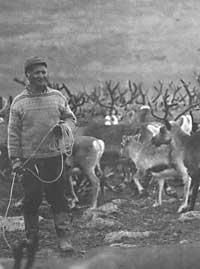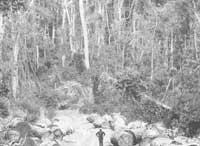Wooden houses in siberia
1987/02/01 Iraeta, Jose Jabier Iturria: Elhuyar aldizkaria
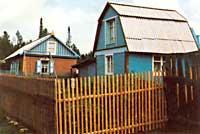
To see the importance of timber construction in Siberia, it is enough to indicate that in the villages there are more than a hundred houses inhabited. In the city of Irkust, with a population of 500,000 inhabitants, you can find many wooden houses inside the city, both individually and forming streets. They say that those on one floor are of local origin and those on two floors of European traffickers.
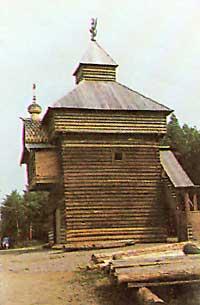
The plant of the house is raised with about forty centimeters of filling or currently with concrete. The walls are formed by trunks lying, carved by four or three sides. Those who have the unworked part usually place the part out. To prevent chorlitos from falling between the logs, they place a kind of cotton, but thanks to the existing tails, these intersections do not generate problems. The corners of the houses, usually by crossing logs (by rebate).
On the walls open windows of two leaves, giving them outwardly wooden shutters. The ceilings of the rooms are also made with the trunks lying, placed occasionally and covered above and below the boards. If the light is large enough, place a column of sufficient size. The fabric of the roof and of the goats is composed of trunks of size that we make entresacados, placed with their slopes, covered with tables. Now above these tables is placed in almost all houses, and because it looks so much or, to tell the truth, it does not hurt to the sight. Inside, in the kitchen, a kind of oven is made to make fire with mud, but another thing would be to communicate it.
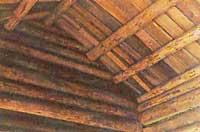
In the old houses, at least, they had two kitchens, dirty and clean, both of fire. It was dirty for the preparation of the daily meals of the animals, as well as for the protection of some animals in hard winter, such as sawdust, veal, etc. The clean kitchen was, above all, to welcome the public and there they had the boxes of clothes and the most useful items of the house, so that the jeans see them. In these two kitchens the rooms were separated by clay ovens, among which was the general room.
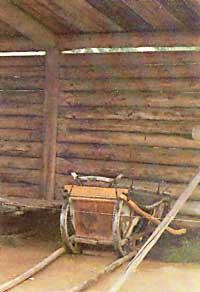
They had a sauna in a separate room. This room had two small windows. One of them covered by a wooden shutter (to renew the wind when necessary) and another glass cover, the exterior and exterior interiors to see the interior. This is how young people chose their brides. In one corner the wooden floor was missing and in its part there was land. There they made fire with lots of stones on top. When they warmed up, they threw water from top to bottom.
Formerly these houses (isbek) had no fireplace to better take advantage of the heat of the fire, but then for comfort or by the placement of fireplaces. Now the data is received with similar building systems.
These penknives are made in forests or very remote places, for holidays and weekends. The land for these, since the whole territory is of the State, rents them the State with enough price. It is an area with an approximate price of two thousand pesetas annually. Then the house –datx- receives it by oneself and owns what it has done, with the right to sell if it wants. It is curious, but being surrounded by forests of kilometers, they do not take any stick to make the house. Forests belong to the state and it is he who sells the wood they need, even if it is very cheap.
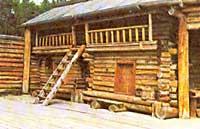
In this sense, the aim of this workshop is not to provide technical specifications, but to show that wood can be used in the construction of buildings in Euskal Herria. Today it can be said that it is used for various things, doors, windows and pavements. But what I wanted to make clear is that there is the possibility of making wooden walls, the structure of the roof, and in two words the whole house.
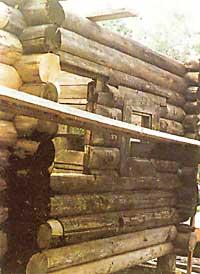
The usual motto of this topic will be that at least in an important part of the Basque Country it rains a lot and that this excessive humidity rots. But, besides raining a lot in Siberia, it casts snow on the long winter bar, and there follow the wooden houses. The key, certainly, may be in treatment. The Russians of yesteryear had special herbs and with their perfumes satiated well the woods.
When the Russians arrived in Siberia, in the seventeenth century, the native ashes (buriates, jakutos, evencos, etc.) They lived in portable shacks made up of sticks and skins. After seeing the houses and garments they had, there is no doubt that the American Indians are related to them. If we know what the ttipis are, we know what the places of residence of the first inhabitants of Siberia were like.
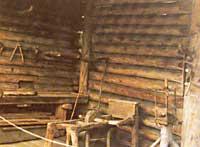
When the Russians arrived in this place, they found as they are today the impressive forests impossible to believe (especially with avabebos and fir trees), and if the Russian uses the way the wolf uses the teeth (with the same skills), without further deepening, we could understand that the creation of wooden houses occurs in the bat.
In this repository someone can say what we are doing. In Euskal Herria we have a lot of water and not much, but we could say that we have other types of trees and especially pine insignis. They tell us that this type of trees only serves for paper ironworks and to amaze the landscape, but when they use it in the construction of the house in Australia and New Zealand (they also make bridges with pine), it is clear that the low value of the insignis is one of the stories that we have most often had among us.
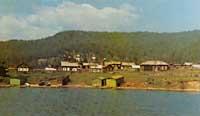
Who should keep these stories?... The key to wood conservation lies in: In treatment. And that's easy to understand by seeing wooden poles that repented the telephone wires and force. Siberian wooden houses (not painted) have the same dark color. This is a similar treatment.
That is the conclusion that should be drawn from these lines: That Euskal Herria has few resources and that we should learn to make better use of the breaks we have. Let us know how to give a true Added Value to the results of our land, because in the next moments we will be necessary of everything.

Gai honi buruzko eduki gehiago
Elhuyarrek garatutako teknologia




